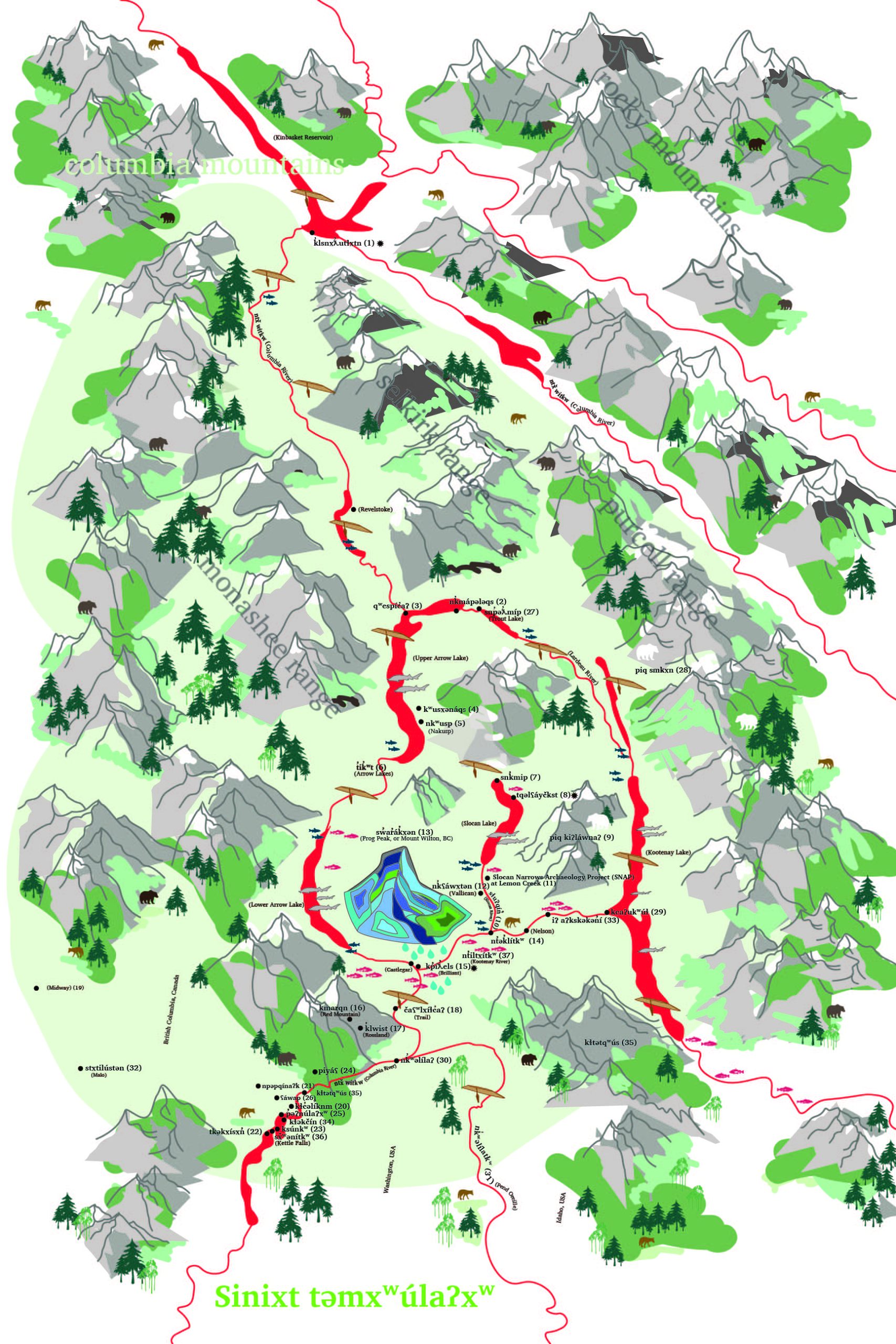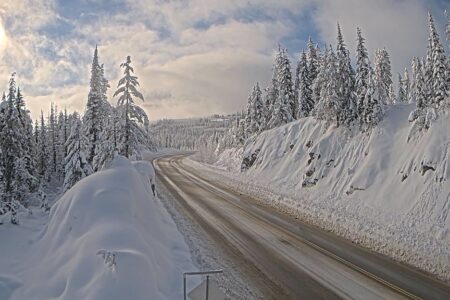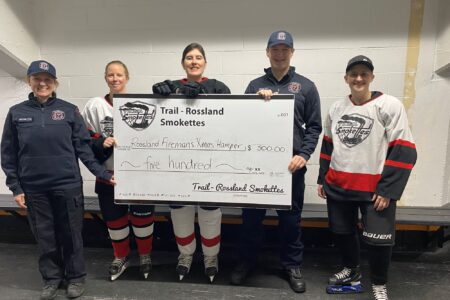Autonomous Sinixt: What's in an Indigenous Name?
What’s in a Name?
Original places names of the Sinixt təmxwúlaʔxw (homeland) in the headwaters of the Columbia River region of BC have been mapped in sn-səlxcín, the Interior Salish Dialect of the Sinixt. Autonomous Sinixt are launching the map for Canada’s Indigenous Day on June 21, joining many other contemporary Indigenous Peoples worldwide who are working to re-instate traditional place names.
This process is known as counter-mapping and is a key strategy for Indigenous Peoples resurging from the devastating losses of colonialism. Counter-mapping foregrounds the traditional knowledge of places that have been erased by colonization, skewed by inconsistencies in previous research efforts, or minimized by selective language revitalization efforts. The back of the map includes extensive information about Sinixt lifeways and contemporary concerns.
The location-specific information for this map is the fruition of over a year's research by Shane Giofu, the settler anthropologist who works on the T'kikstn Project for Sinixt Dialect Revitalization. Giofu notes, "This map represents only the beginning of the work required. So much has been lost or ignored, both by colonial and contemporary researchers and curriculum creators that ongoing, extensive research is needed to produce an accurate representation of Sn-səlxcín names, not just a more general Nsyilxcen version."
Autonomous Sinixt are also working on a more exhaustive digital map which will allow the public to explore Sinixt təmxwúlaʔxw even more comprehensively. The sinixt.geoforms.ca digital map, once launched, will be interactive and layered, providing opportunities for learning more about Sinixt locations as well as pronunciations.
“The specific language of our land holds important knowledge about this land,” noted Marilyn James, Autonomous Sinixt Matriarch, “about how to live here and honour it. In spite of how much has been lost, my ancestors keep urging me to continue this work. This land is hungry for the language it birthed millenia ago.”
"One of the challenges for the public," noted Giofu, "will be learning to pronounce these place names in order to begin using them." They are written in the American Phonetic Alphabet (APA) because the language contains very different sounds than English. kp̓ íƛ̓ els, for example, the traditional name of the confluence of the nt̓ iltxítkw (Kootenay) and ntx̌ witkw (Columbia) Rivers, is featured on the map. "The "ƛ̓ " sound in kp̓ íƛ̓ els" explains Giofu, "is akin to trying to make a t and l sound together, without using your vocal chords, while pushing the air out the sides of your tongue."
“We will be making the maps available free of charge to the five School Districts which cover the təmxwúlaʔxw (SD10, SD51, SD20, SD19 and SD8),” said project Administrator K.L. Kivi. “Educators have been so enthusiastically clamouring for Sinixt educational materials, we can barely keep up with the demand. Both the paper and digital maps are designed to help them in their work.”
The maps are currently available at Trail, Rossland and Nakusp Museums, Otter Books, Raven’s Nest, and other retailers in the təmxwúlaʔxw as well as through the Maa Press website at www.maapress.ca.
This work was funded through the First Peoples' Cultural Council and the Department of Canadian Heritage.
























